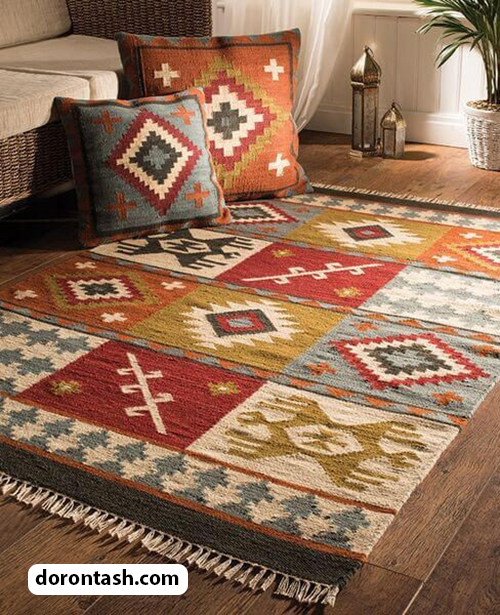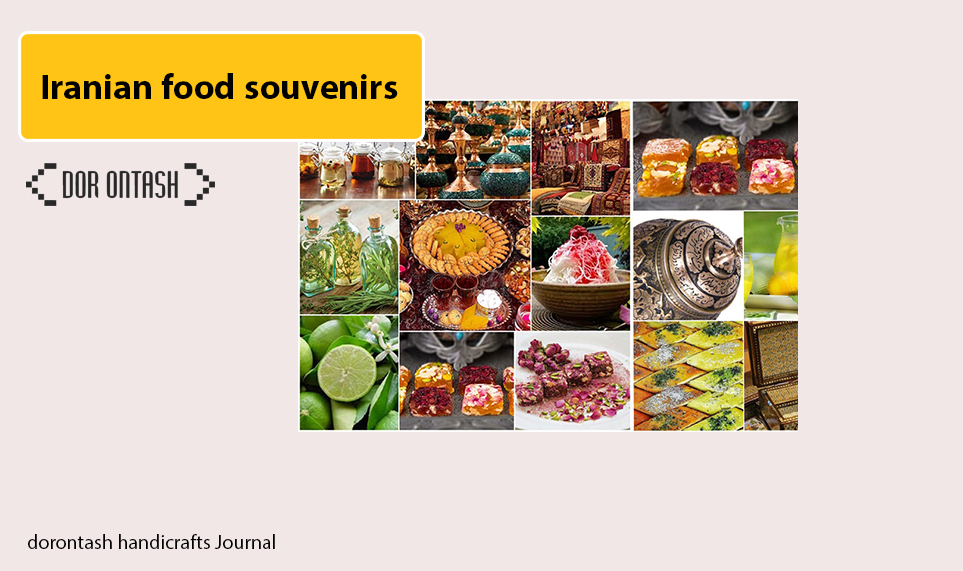Looking at the history of carpet weaving and carpet weaving, its history probably goes back to the Neolithic age (7000 BC). Woven Turkish Kilim Rugs and carpets are used not only to cover the floors of houses, but also for beauty and decoration. Patterns woven on carpets and rugs tell many issues about society, because these designs show cultural characteristics such as the way people live, dress, and their religious beliefs.
Carpets and rugs are extremely important in Turkish culture and have their roots in the Turkish people of Central Asia. When the Turkic tribes came to Anatolia, their nomadic culture and traditions merged with the Anatolian civilization, resulting in a completely new combination.
Carpets and rugs represent the daily life and culture of the society. As a result, the major changes of the society are reflected in the pattern of motifs and carpets and rugs are produced and woven based on them. For example, after the arrival of Islam, numerous Islamic designs and themes were incorporated into carpets and rugs. Ethnic and regional diversity can be seen in Turkish carpets.
Carpets and rugs are produced in different styles and designs. Turkish carpets and rugs represent the daily life of Anatolian people, which is similar to a quick sketch or sketch with a needle and thread. The color, pattern, design, size, and even the dyes used for carpets and rugs are all important considerations.
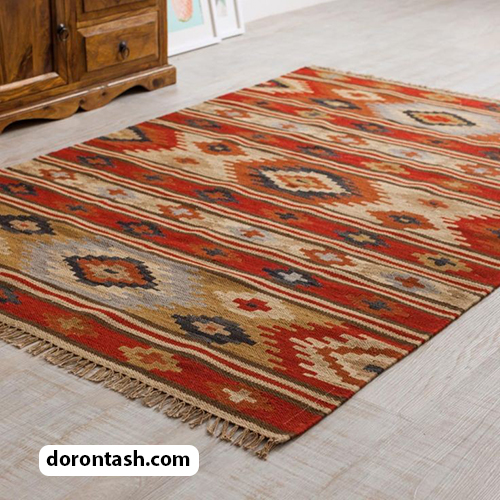 What is a rug?
What is a rug?
A rug, known as a rug in Turkish, refers to a multi-purpose pile-free thread made with one of several historical weaving methods. Carpets are widely used in geographical areas such as Turkey (Anatolia), North Africa, Balkans, Iran, Afghanistan, Pakistan, Central Asia and China.
The difference between a carpet and a carpet is that while the design of the carpet is created by tying individual short strands of different colors on the threads and gluing them together by pressing the wefts tightly, the designs of the carpet are created by interweaving various threads and wefts with Different colors are created, resulting in a flat texture.
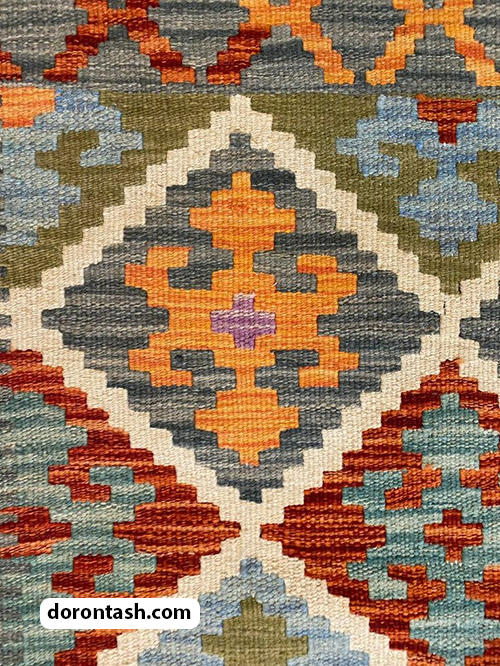 What is Anatolian rug?
What is Anatolian rug?
The term Anatolian carpet refers to rugs and carpets that are woven in the Anatolian style. Geographically, Anatolia was ruled by the Ottoman Empire for a very long time, and it shows that Ottoman and Islamic culture has influenced these things.
Anatolian rugs use designs and patterns to express the culture, ethnicity and religious heritage of the region. Anatolian carpet is of great importance in world culture because it is the oldest center of human civilization. Therefore, it shows how many diverse and numerous civilizations exist in that region. This is inevitably shown on carpets and rugs.
Anatolian carpets and rugs are made of natural materials, which is one of their most important and distinctive features.
What are the types and materials used in Anatolian carpets?
The material used in an Anatolian carpet is as follows.
- Sheep wool: It is a popular material in Anatolian carpets due to its soft texture, low cost and high durability. It also absorbs dyes quite effectively. Wool, unlike cotton, does not get dirty and does not show stains.
- Cotton: Cotton is another popular material for Anatolian carpet weaving. It is more durable than wool and does not deform easily.
- Silk: Silk is the most complex and expensive material used in Anatolian carpets. It is very fragile but resistant to mechanical stress.
- Camel and goat hair: Camel and goat hair are used in Anatolian carpets, and are favored by nomadic tribes and villages. Goat and camel wool has a strong texture and retains heat due to its thick structure, which is why it has become popular among nomads and villages.
How durable are Turkish Kilim Rugs?
It is known that Turkish carpets have been woven since 3000 years ago and millions of Turks have been weaving and selling carpets for years. These colorful and richly woven carpets are woven with two knots only in Turkey and the world and are different from all other carpets with this feature. This means that each knot reinforces itself twice around the cross thread. This is why Turkish carpets are said to be stronger than other hand-woven carpets.
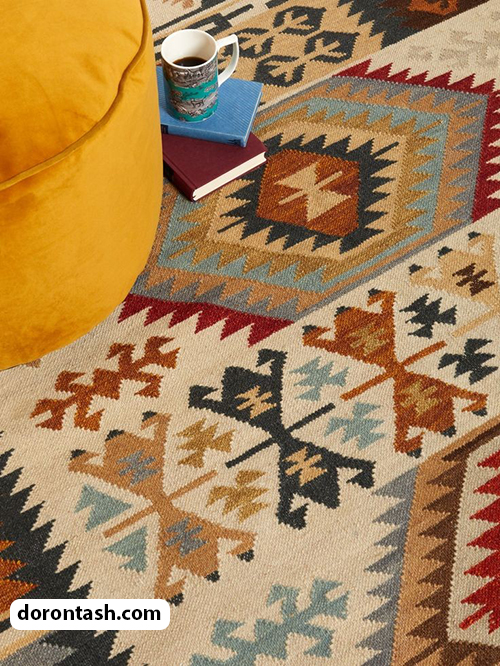 How to recognize Turkish Kilim Rugs?
How to recognize Turkish Kilim Rugs?
Wool, cotton and silk were used in Turkish carpet weaving. These used ropes were tied with a Turkish knot, which is also known as Turkbaf. In addition to these, double knots are used more in Turkish carpets than in Persian carpets. For this reason, it can be seen that more geometric patterns are used in Turkish carpets.
There are three main types of hand-woven carpets, which are mentioned below:
- Cotton to cotton : due to the thicker cotton thread, the carpet production is thicker and not so thin.
- Wool on cotton: Here the cotton yarn is knitted on the criss-cross wool yarn. The pattern is thinner and therefore slightly more expensive.
- Silk : It is the thinnest and most expensive carpet.
Each region in Türkiye has a different style of carpet decoration. The different styles of carpet decoration are listed below:
- Milas carpets are the most famous carpets in the western region of Türkiye. The carpets have a yellowish color and are generally cotton carpets.
- Unlike others, Konya carpets are made of high-quality wool. They have many double knots and are usually decorated with medals from the Seljuk period.
- Yörük rugs often use symbols from their daily lives when weaving their rugs. For example, Scorpio is the most popular pattern that expresses freedom. On the other hand, the camel’s foot is a symbol of transportation. In general, Yuroks weave multi-colored carpets.
- Everyone’s carpet The best carpets with the most two knots are woven here. They are woven in both wool and cotton and often feature floral designs. Until Turkey became a state, every region wove carpets only for the palaces of the sultans.
To know if the carpet is handmade, turn it over and look at the tassels on the corner of the carpet. In machine-made carpets, this corner is generally sewn to the carpet. Also try pulling tassels. The thread is thrown all over the carpet.
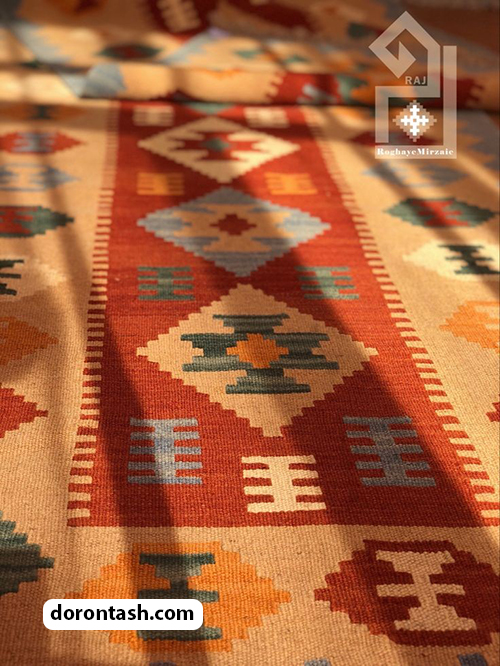 Types of Turkish Kilim Rugs
Types of Turkish Kilim Rugs
Carpets and rugs are different in terms of features such as the place of production, materials used, patterns, patterns and designs and so on. You can see the detailed list of carpets and rugs in Turkey below.
- Anatolia: Anatolia has a very rich cultural heritage. Almost every city has its own distinct character. Turkish knot or Gourdes is used in the general design of carpets called Anatolian style.
- Bergama: Bergama is a small area in the city of Izmir, Turkey, which is located in the Aegean Sea region. Bergama is one of the oldest carpet weaving centers in the world. Green, blue, black, yellow and pink colors are known as dominant colors in bergama style. The main design of the motifs usually resembles a plant or the plant itself.
- Chanaq Qala: Flat weaving in ChanaqQala style is very common and wool is usually used. The main colors of the carpet are green, red, blue and yellow.
- Duşeme Alti: Duşeme Alti is a small area in Antalya where numerous nomads (known as Yurk in Turkish) have been living for many years, producing pure wool carpets with dark green and red geometric patterns.
- Gordes: Gordes is a city in western Turkey. Since the 17th century, Gordes has been known as a weaving hub. Gordes carpets are the most famous and popular among oriental carpets due to their unusual patterns. Gordes has a distinctive knotted style that influenced Ottoman palace carpets. Gordes carpets are known with bright red background with different colors of green, yellow, blue and cream. The texture quality is excellent.
- Hakkari: Another important weaving center in Turkey is Hakkari. Thirty main themes can be found in carved rugs. The most popular designs are: Har, Somark, Samar, Halit Beg, Gul Hazar, Golsaryaf Gul Gever and Sine. Red or burgundy, dark blue, brown, black and white are the five main colors that are used in carpet carving.
- Haraka: Haraka is famous for producing the best pure silk carpets in the world. In the literature of carpets, Harke carpet is known by this term and has a special place among world carpets. Sometimes they are referred to as “palace carpets”.
- Sparta: Sparta is a significant carpet and rug production center in Turkey, located in the southwest. Floral motifs are as popular on Spartan rugs as gourdes and shina knots.
- Kayseri: Carpets are woven in and around Kayseri and constitute the major part of Turkish carpet art. Kayseri is known as one of the most prominent centers of carpets and rugs in Turkey. Natural colors such as white, black, gray and purple are usually used. Typically, the background color is crimson, blue, or dark blue. They use geometric and floral designs and all the strings are dyed with Runas roots. The dominant colors on these carpets are navy blue, garlic red, brown and gray.
How is the Turkish Kilim Rugs woven?
Carpet weaving uses various techniques. Thread styles vary and carry their respective histories between threads.
A carpet with hand-knotted piles has raised surfaces formed from the ends of the knots woven between the warp and the weft. The two main knots are the Gordes/Turkish knot and the Shina/Iranian knot, which are seen on Anatolian and Iranian carpets, respectively. A rug is a flat carpet or woven tapestry without lint. The width and quantity of weft threads, pile height, how many knots are used and knot density all have an effect on the appearance of the pile carpet.
Grooved tapestry/grooved tapestry is the most common weaving technique used to weave geometric and patterned rugs diagonally. Gaps in the space between two color blocks are created by returning the weft around the last warp in a color area and then returning the next color weft around the adjacent warp.
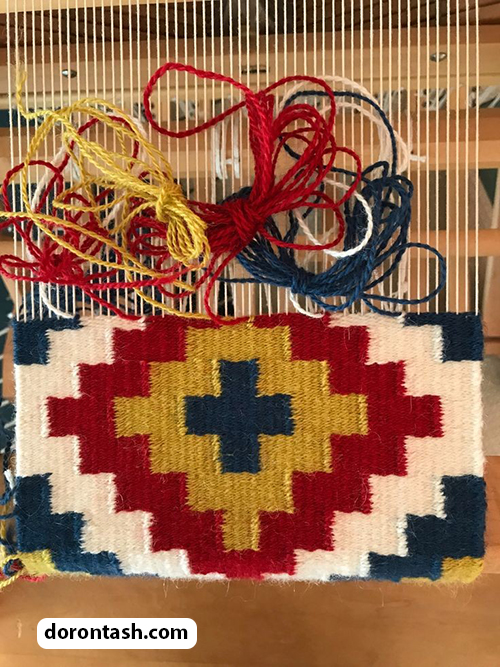 Double and dovetail, also known as common warp or interlaced weave, refers to wefts of two separate color units that loop (in opposite directions) around the same warp that defines the boundary between them. The wefts from the adjacent colored fields are interlaced with each other in the double technique between the interlaced warp threads that are placed between them.
Double and dovetail, also known as common warp or interlaced weave, refers to wefts of two separate color units that loop (in opposite directions) around the same warp that defines the boundary between them. The wefts from the adjacent colored fields are interlaced with each other in the double technique between the interlaced warp threads that are placed between them.
Sumac/ is the common word for the weaving method used to produce complex and varied motifs. Colored yarns are wrapped around the warp in mathematical patterns, allowing weavers to create intricate, dramatic designs that create a dramatic effect on the surface of the work. As this is a difficult technique, it is often replaced by thin wefts woven in the background and used for smaller works such as purses, prayer rugs and mats.
Zarbafi or Zarbaft is a challenging method that is valued by the weavers of Yurok and Turkmen tribes in Anatolia. They are supplementary weft or extra weft weaving techniques that allow weavers to add designs to the regular weft that holds the warp yarn together. They look like an embroidered attachment and generally result in a raised design.
In the Jajim weaving process, threads of different colors are placed on the back of the weave between the weft and warp threads. It is often used to decorate a simple woven object, or to produce small decorative patterns that can be scattered or consecutive. The background texture underneath shines through, giving the appearance of an embroidered design, and is often used to fill empty space. Pile wefts are often used to make bags, mats and blankets.
Tulu Tulu (Filikli) is derived from the Turkish word “tuilo” which means “hairy”. This method produces soft backed mats with piles or long hairs that are used by herders in central Anatolia to provide comfort and warmth during harsh winters. The extra wefts produced from the free-spun yarn are woven into the plain rug using a Turkish knot, resulting in tufts of soft wool.
How is Turkish Kilim Rugs dyed?
The most important feature of Turkish carpets and rugs is that they are made only of natural materials. The color of the carpet, rug or thread is also obtained from local natural sources. For many years, dyes were produced naturally from plants, animals and minerals.
Colored materials are heated with wool and thread until the desired color is obtained. The quantity and quality of dyeing materials is very important. Water temperature and soaking time should be properly planned.
What are Turkish Kilim Rugs patterns?
Turkish carpets and rugs have several specific and distinct themes. You can identify a Turkish carpet by its unique patterns.
Moska and Nazarlik (talisman and gaze) is one of the common motifs of Turkish carpets. It is said that some people have a power in their eyes that causes harm, injury, misfortune and even death to others. Evil eyes are various devices that reduce the effect of the evil gaze, thus protecting its owner. The term mouska refers to a written talisman/spell that is said to have magical and religious powers to protect its wearer from dangerous external forces. This device is a blue circle with an eye in the center.
 Bird designs (kush in Turkish) that can be seen in Turkish carpets have different meanings. While owls and ravens represent bad luck, moons, doves and nightingales represent good luck. The bird represents joy, happiness and love, it represents strength and resistance, it is the imperial emblem of several Anatolian countries. Birds are also symbols of heavenly peaks and longevity. Anka bird (phoenix) fighting a dragon represents spring.
Bird designs (kush in Turkish) that can be seen in Turkish carpets have different meanings. While owls and ravens represent bad luck, moons, doves and nightingales represent good luck. The bird represents joy, happiness and love, it represents strength and resistance, it is the imperial emblem of several Anatolian countries. Birds are also symbols of heavenly peaks and longevity. Anka bird (phoenix) fighting a dragon represents spring.
Pitrak is a hairy plant that sticks to people’s clothes and animal fur. It is believed to ward off the evil eye. However, since the phrase “like a marigold” means “full of flowers”, this design is used on flour sacks as a symbol of wealth.
Sandik is a role that generally represents a young girl’s wedding fund. Since the items of this fund are used in the husband’s house, the wishes and hopes of the young girl are reflected in the pieces she knits, knits and the hat she sews.
A dragon(s) is a legendary monster with lion-like claws, a snake-like tail, and wings. The dragon is the ruler of the elements of air and water. It is said that the flight of dragons and phoenixes brings spring showers. The dragon, which is said to be a large serpent, protects hidden treasures as well as the tree of life.
In Turkish carpets, the ram’s horn (Kujbinozo in Turkish) means production, courage, strength and masculinity. It’s also worth mentioning that the knitter who uses this thread seems to be pleased.
Fertility pattern (blessing) consists of two Elibelindeh roles for women and two Kojboinozo roles for men. The eye motif in the center of the composition is used to protect the family from the evil eye. A man and a woman are shown with a hand on the hip joint (elibelinde) and a ram’s horn (cojboinozo).
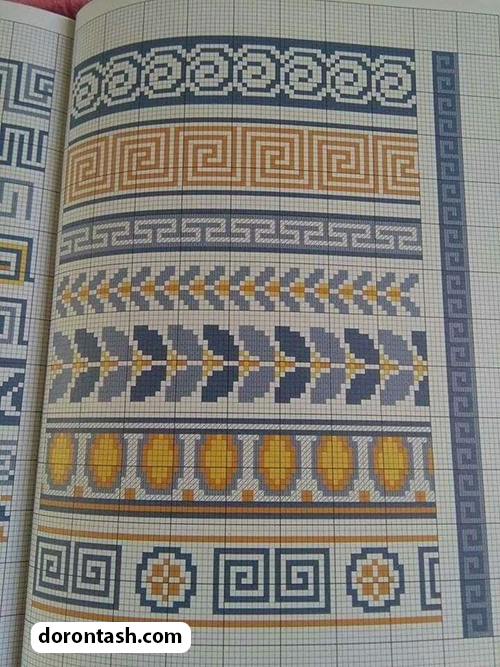 What is the history of Turkish Kilim Rugs?
What is the history of Turkish Kilim Rugs?
Turkish carpets have a long history that goes back to the nomadic roots of the Turks in Central Asia. In the nomadic tribes, the carpet had a great influence. The carpet was a removable device that made it easier to sit on the floor due to the frequent movement and living in tents.
Carpet weaving, which began with the Seljuks, was continued by the Ottomans. After the Seljuk Turks and before the Ottomans, during the transition of the 14th century, animal motifs appeared on carpets. These rugs are known as “carpets with animals” because of the animals on them.
Animal designs on carpets became more diverse until the 15th century. At the same time, a new group of carpets appeared with animal motifs and geometric patterns.
The second successful period of Anatolian carpet weaving began in the 16th century. The carpets of this period are known as “classic Ottoman carpets”.
These motifs, which include twisted branches, leaves and flowers such as tulips, carnations and hyacinths, are woven in a realistic manner and form the base of the rug. This style was popular in different parts of the world and can still be seen in Turkish carpets today.
Qarshahr, Bandirma, and Chenaq Qala, as well as Usk and Bergama became important centers of carpet weaving in the 16th, 17th, and 18th centuries.
Carpets woven in Herke (near Istanbul) gained international recognition in the late 19th and early 20th centuries. Originally, these carpets were made exclusively for the sultans of the Ottoman Empire. Today, the best silk carpets in the world are still woven in every part of Türkiye.
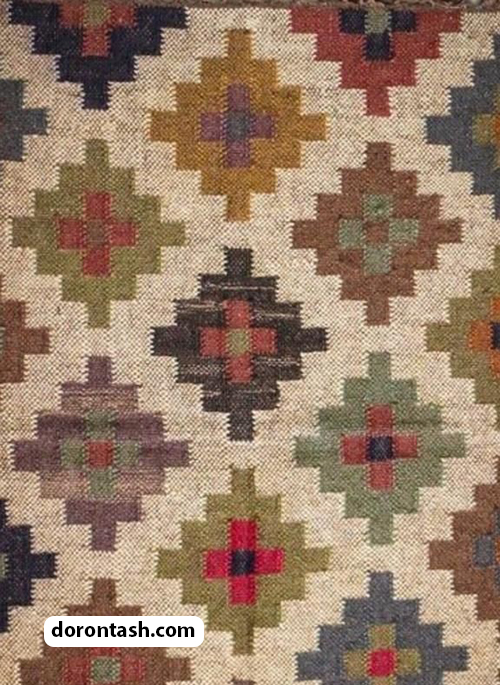 Which cultures influenced Turkish Kilim Rugs?
Which cultures influenced Turkish Kilim Rugs?
Turkish carpets and rugs are influenced by the nomadic culture of the Turkish tribes who migrated from Central Asia, Islamic culture and the Anatolian-Ottoman Empire. There are many symbols and characteristics associated with these subcultures.
What makes the Turkish Kilim Rugs so special?
Turkish rugs are unique and therefore expensive for several reasons, one of which is naturalness. Basically, these rugs are hand-woven rather than machine-made. Since they are woven by hand, they take a long time to complete.
Another reason can be cultural issues, a historical past that is reflected in its design. These carpets and rugs are part of the cultural heritage of Turkey. Women also play an important role in making Turkish carpets in very special periods.
What is the difference between rug, carpet and prayer rug?
It is very important to distinguish between carpets, rugs and mats.
Carpets are known as Hali (carpet) in Turkish and are usually found on the floors of houses and corridors. They are thicker and larger than rugs, although rugs are significantly thinner and flat-woven.
On the other hand, prayer rugs are small rectangular mats that are specifically designed for worship. Prayer mats are used exclusively for prayer and are found in homes and mosques.
What regions of Türkiye are famous for Turkish Kilim Rugs weaving?
Dushmehalti Antalya, Bergama Izmir, Kayseri, Konya, Kars, Herke and Hakkari are among the best carpet and rug production areas in Turkey.
Tips you should know when buying Turkish Kilim Rugs
If you are planning to buy Turkish carpets and rugs, you should pay attention to some key points.
Turkish carpets and rugs are very expensive because of their naturalness. You can exchange and negotiate, but be careful with fake and non-original carpets. Turkish carpets are produced using high quality materials. It is important to understand that some materials are more expensive than others. For example, wool and silk are more expensive than cotton and wool.
It is important to know the types of Turkish carpets and rugs before buying, which can be categorized into carpets, rugs, jajim and sumac. The rug is thicker than the other three, but they are all flat weaves without knots. They are often used as wall coverings and small carpets.
Another use of the Turkish Kilim Rugs
bag: Because of the excellence of carpet weaving in Türkiye. kilim bag is one of the famous handicraft products of Türkiye.
cushion : Carpet cushion is another application of carpet which is recently used in home decoration and even hotels.
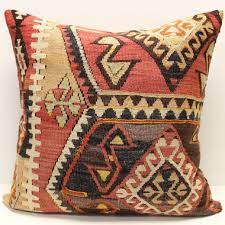
Why is Turkish Kilim Rugsexpensive?
Turkish Turkish Kilim Rugs are expensive because they have a wide variety of patterns and are also very high quality and durable.

